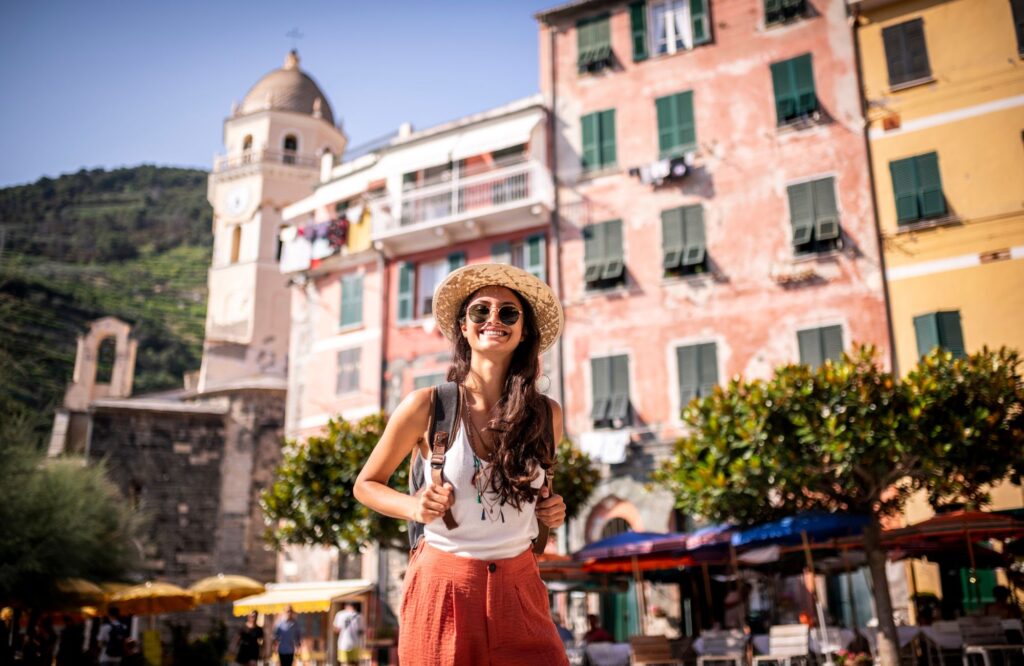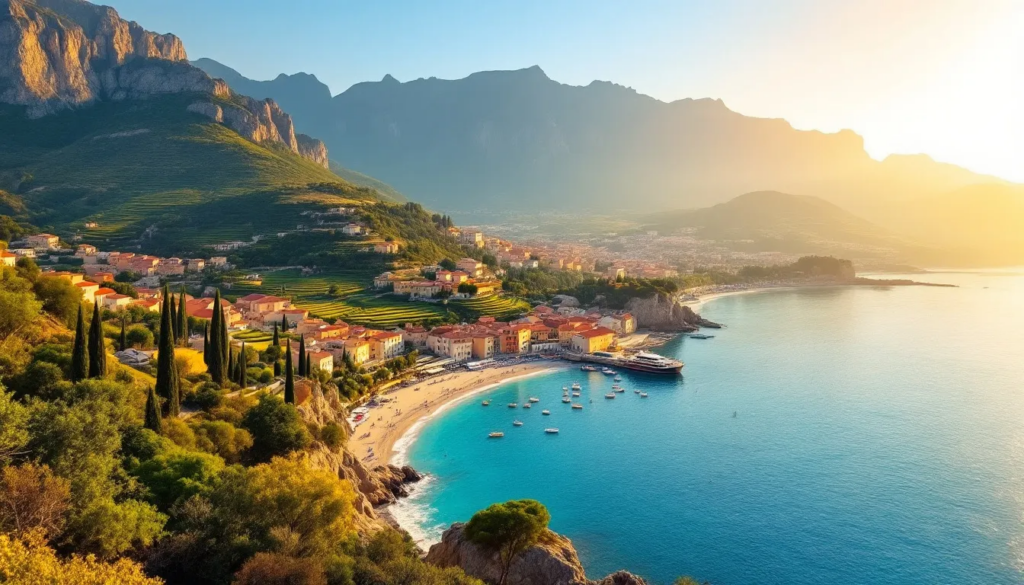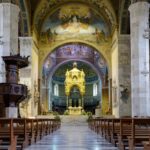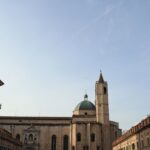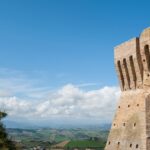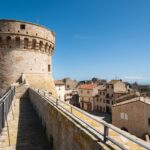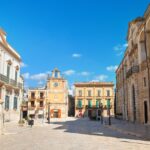Hadrian’s Villa, known as hadrian’s villa tivoli Italy located just outside Rome in Tivoli, Italy, is one of the most spectacular archaeological sites from the Roman Empire. Built by Emperor Hadrian as his personal retreat, this sprawling villa complex reflects the emperor’s fascination with Greek culture, Roman architecture, and grand gardens. The villa stands as a testament to the grandeur and achievements of ancient Rome and the Romans, showcasing their remarkable engineering and artistic legacy. Situated near the Eternal City, Hadrian’s Villa is not only a highlight of Italy but also a significant site within the broader context of European history and culture, underscoring Italy’s prominent place in Europe as a center of historical and cultural heritage. Today, Hadrian’s Villa in Tivoli stands as a UNESCO World Heritage site, offering a glimpse into ancient Roman life, luxury, and grandeur.
Since ancient times, Tivoli has been a popular retreat for Romans and elites, renowned for its scenic beauty, tranquil atmosphere, and its famous villas, including Hadrian’s Villa and Villa d’Este. Whether you’re a history enthusiast, an architecture aficionado, or simply someone looking to explore Italy’s hidden gems, Hadrian’s Villa, a true cultural heritage, is a must-see. In this comprehensive guide, we’ll walk you through the villa’s history, architectural highlights, and the must-see attractions within its walls. Additionally, we’ll cover practical tips for planning your visit, so you can make the most of your trip to this ancient masterpiece.
History of Hadrian’s Villa
Nestled in the hills of Tivoli, just east of Rome, Hadrian’s Villa is one of the most extraordinary archaeological sites of the Roman Empire. Built as Emperor Hadrian’s private retreat, it reflects the power, sophistication, and cultural curiosity of one of Rome’s most visionary rulers. This sprawling estate not only served as a residence but also as a reflection of Hadrian’s fascination with art, architecture, and the diverse cultures he encountered during his reign.
The Origins of Hadrian’s Villa
Hadrian’s Villa, or Villa Hadriana (also known as Adriana, highlighting its close association with Emperor Hadrian and its architectural significance), constructed during the early 2nd century AD by Emperor Hadrian, stands as a prime example of Hadrianic architecture, renowned for its innovative design and syncretic influences from Greek, Egyptian, and Roman traditions. Unlike traditional Roman palaces, the villa was not just a home but a monumental escape for Hadrian from the hustle and bustle of imperial life in Rome. The villa’s design is a reflection of his deep admiration for the cultures of Greece, Egypt, and Rome, blending elements of classical Roman architecture with Greek and Egyptian influences. The site is remarkable for the sheer scale and complexity of its layout, with most buildings within the villa complex being significant and extensive. The diversity and number of buildings, ranging from palaces and baths to libraries and temples, demonstrate the grandeur and ambition of the project. The villa’s large courts were multifunctional spaces where the large court lived, accommodating gatherings, social activities, and serving as hubs for both leisure and administrative functions.
Architectural Masterpiece and Its Decline
The villa was at its peak during Hadrian’s reign and continued to serve as a royal retreat for several centuries. After Hadrian’s death, the villa fell into neglect and was eventually abandoned. Over time, the grandeur of the villa began to erode, with many of its ruins being plundered for building materials. Numerous sculptures and architectural elements were Hadrian’s villa were removed over the centuries, with artifacts dispersed to museums or lost entirely. The remaining marble statues and fragments can still be seen at the site or preserved in collections around the world. It wasn’t until the 16th century that interest in Hadrian’s Villa was revived, and today, extensive archaeological efforts continue to uncover its secrets. Many discoveries from the villa have been documented in scholarly exhibition catalogues.
Architectural Highlights of Hadrian’s Villa
Hadrian’s Villa (also known as Villa Adriana), along with its extensive gardens, is a monument to Roman imperial architecture and a masterclass in Roman architecture, with elements borrowed from a variety of cultures, including Greek, Egyptian, and Roman influences. The villa complex contains numerous palaces, baths, temples, and gardens, as well as some of the most important monuments, such as the Maritime Theatre and Canopus. Throughout the villa, visitors can admire an impressive collection of statues reflecting diverse artistic traditions. The site also features luxurious dining rooms designed for social gatherings and entertainment, elaborate water basins that enhance the gardens and water features, and a large court serving as a central gathering space for events and leisure. Here are some of the must-see highlights:
1. The Canopus and Serapeum
The Canopus is one of the most iconic features of Hadrian’s Villa. This large, rectangular pool was designed to mimic the sacred canal in Egypt, reminiscent of the Nile, where Hadrian had once traveled. It’s flanked by marble statues of gods and mythological creatures, creating a serene, reflective space. At the end of the pool sits the Serapeum, a temple dedicated to the Egyptian god Serapis. This fusion of Greek and Egyptian styles speaks to Hadrian’s admiration for these ancient civilizations.
2. The Pecile
The Pecile is another fascinating element of the villa. It is a long, porticoed walkway that surrounds a rectangular garden. Modeled after the Stoa of Attalos in Athens, it was used as a space for leisure, conversation, and contemplation. The Pecile’s design includes Roman frescoes and a large exhibition space showcasing Hadrian’s collection of Greek and Roman art.
3. The Maritime Theatre
One of the more unique aspects of Hadrian’s Villa is the Maritime Theatre. This circular structure, resembling a Greek theatre surrounded by a moat, was likely used by Hadrian for personal reflection and relaxation. The theatre features a small, island-like pavilion in the center, accessible via a bridge. Its innovative design is considered a testament to Hadrian’s creativity and architectural vision.
4. The Antinoeion
The Antinoeion is dedicated to Hadrian’s beloved companion, Antinous, who tragically died during their travels in Egypt. The temple was designed to commemorate him, showcasing Hadrian’s deep affection for Antinous. The site also features large marble statues of the young man, making it a poignant reminder of their relationship.
Must-See Attractions at Hadrian’s Villa
While the architecture of Hadrian’s Villa is remarkable, the villa’s grounds are equally impressive. The vast gardens and water features offer a glimpse into the luxurious lifestyle that Hadrian enjoyed. Here are some of the top attractions to explore:
- The Grand Thermae: These grand baths showcase Roman engineering at its finest, with extensive water systems and hot, cold, and tepid pools.
- The Piazza d’Oro: This was Hadrian’s grand court, featuring decorative fountains and marble statues, providing a luxurious setting for feasts and ceremonies.
- The Small Baths: A more intimate bathing area, ideal for relaxation.
How to Visit Hadrian’s Villa
Hadrian’s Villa is one of the most popular historical sites near Rome and makes for an easy and enjoyable day trip. The site offers visitors a chance to explore ancient Roman architecture, peaceful gardens, and breathtaking views of the Tivoli countryside.
Location and Transportation
Hadrian’s Villa is located just outside Rome, in the town of Tivoli. The villa is easily accessible by train from Rome’s Termini station, with the journey taking approximately 45 minutes. Once in Tivoli, a short bus or taxi ride will take you directly to the villa. Alternatively, you can rent a car if you prefer a more direct route.
Tivoli’s proximity to Rome makes it as accessible and appealing as other major European destinations, such as Paris, for travelers seeking rich history and culture.
Opening Hours and Ticket Information
Hadrian’s Villa is typically open every day from 8:30 AM to 7:00 PM, though hours may vary during holidays. Entrance tickets for the various rooms cost approximately €12 for adults, with reduced prices for students and children. It’s a good idea to book tickets in advance during peak tourist seasons.
Guided Tours
To truly appreciate the history and architecture of the villa, consider booking a guided tour. Tours are available in multiple languages and offer in-depth explanations of the villa’s significance.
Conclusion
Hadrian’s Villa in Tivoli is a treasure trove of Roman history, architecture, and culture. Whether you’re marveling at the intricacies of its architectural design, wandering through its huge garden and vast gardens, or reflecting on its history, a visit to the villa is an unforgettable experience. Be sure to plan your trip with the practical tips provided and immerse yourself in the beauty and grandeur of one of Italy’s most important archaeological sites.
At True Colors of Italy, we offer private, all-inclusive day tours that immerse you in the culture, history, and natural beauty of the Le Marche region. Whether you’re traveling solo or with a small group, our curated experiences are crafted for those who seek authentic, stress-free journeys. Contact us today to start planning your personalized Italian adventure!
FAQs
Where is Hadrian’s Villa in Italy?
Hadrian’s Villa is located in Tivoli, a town situated just 30 kilometers east of Rome. It is easily accessible by train from the capital city.
What are the facts about Hadrian’s Villa?
Hadrian’s Villa, built by Emperor Hadrian in the 2nd century AD, is a massive archaeological site that blends Roman, Greek, and Egyptian architectural styles. It is a UNESCO World Heritage Site and contains several notable structures like the Canopus, Pecile, and Maritime Theatre.
How long does it take to visit Hadrian’s Villa?
Visitors typically spend between 2 to 4 hours exploring the villa, depending on their interest in the various sites and the availability of guided tours.

